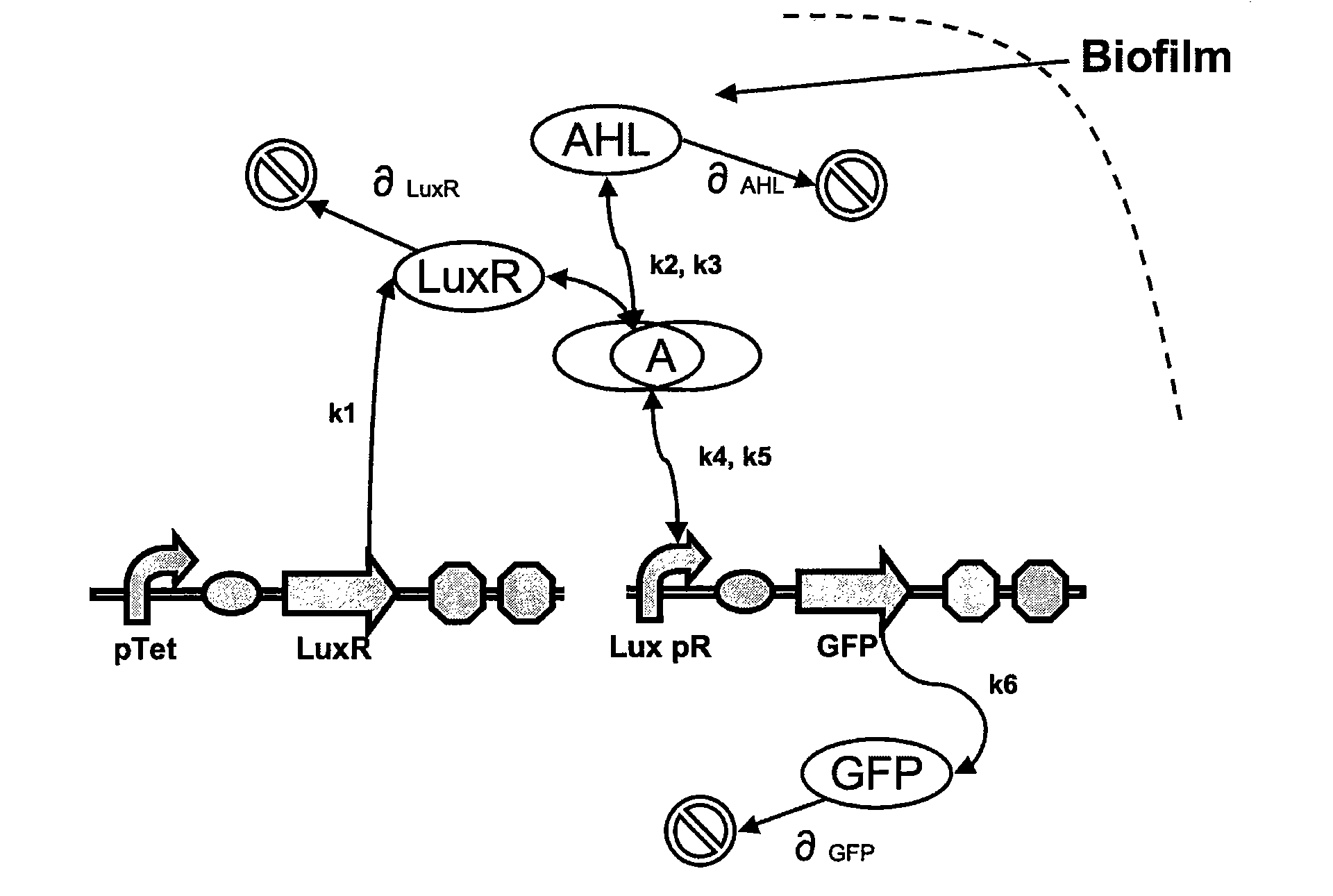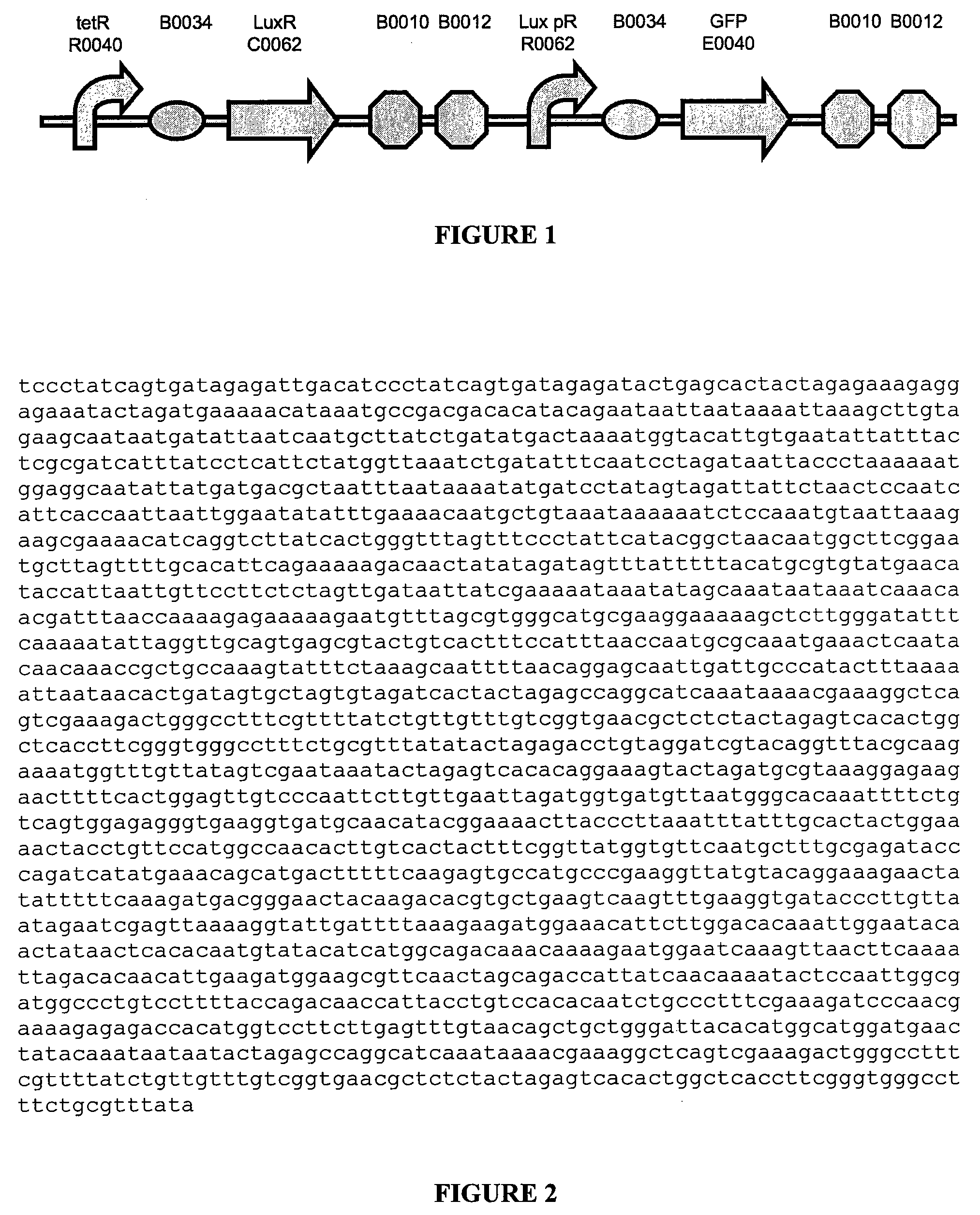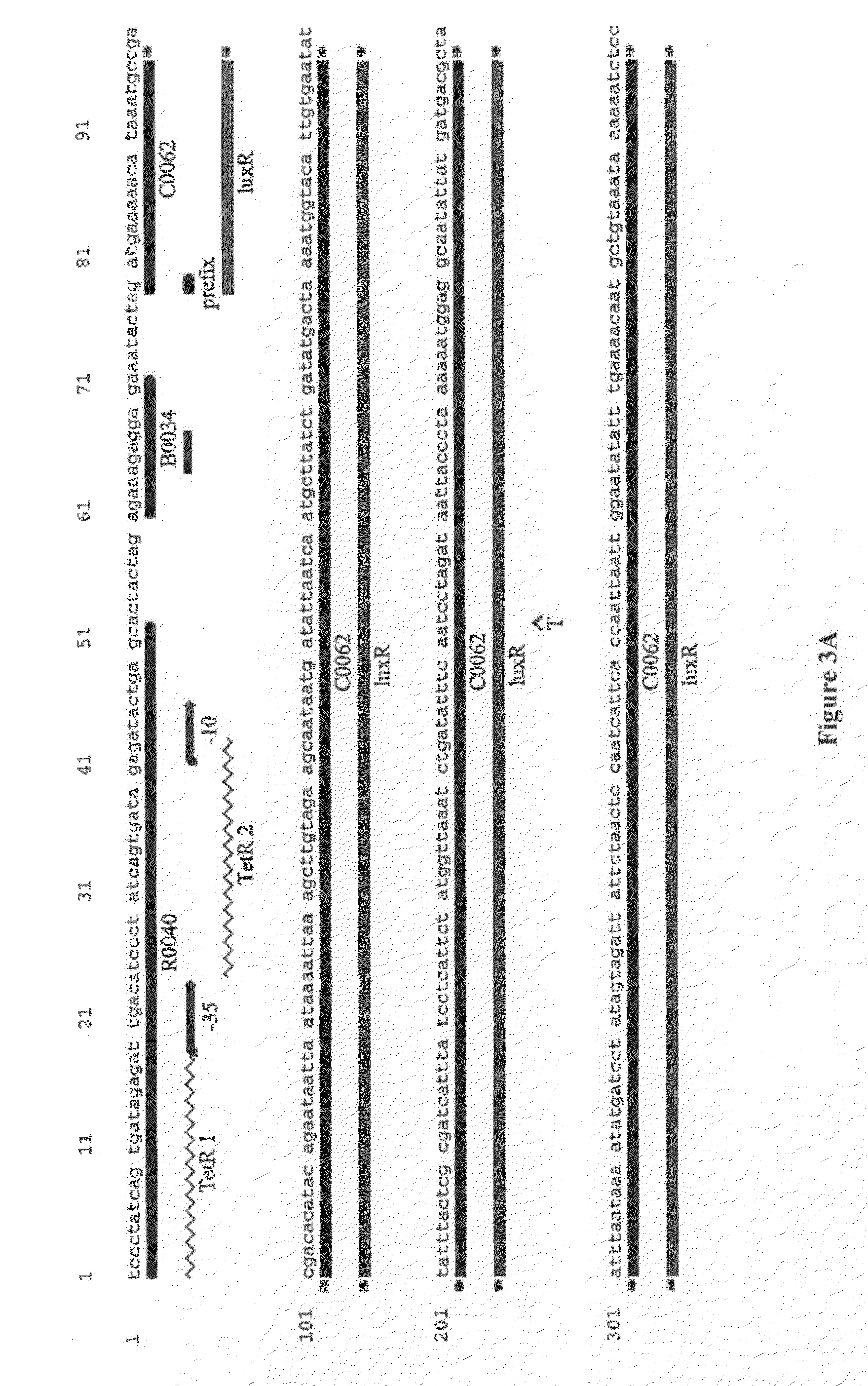Cell-free expression system for the detection of bacterial biofilms
a cell-free expression and biofilm technology, applied in the field of cell-free expression systems for detecting bacterial biofilms, can solve the problems of aeruginosa mucoid strains colonising patients with cystic fibrosis, a particularly dangerous and dreaded pathogen, and the morbidity and mortality of patients undergoing treatment in hospitals
- Summary
- Abstract
- Description
- Claims
- Application Information
AI Technical Summary
Benefits of technology
Problems solved by technology
Method used
Image
Examples
example 1
A First Oligonucleotide for use in a Cell-Free Expression System to Detect the Presence of a Biofilm
[0160]A sequence encoding the luxR gene under the control of the tetR promoter was fused to a sequence encoding the pLux promoter upstream of a sequence encoding a green fluorescent protein. A schematic diagram of the resulting first oligonucleotide (termed construct 1) is given in FIG. 1 and the sequence is given in FIGS. 2 and 3.
[0161]The detection of a biofilm using construct 1 is achieved according to the schematic diagram of FIGS. 4 and 5.
example 2
A Second Oligonucleotide for use in a Cell-Free Expression System to Detect the Presence of a Biofilm
[0162]The main feature of this construct is that it does not constitutively express LuxR and therefore enable the initial concentrations of LuxR to be determined manually. LuxR protein is added directly into the cell-free expression.
[0163]A schematic diagram of the resulting second oligonucleotide (termed construct 2) is given in FIG. 6 and the sequence is given in FIGS. 7 and 8.
[0164]The detection of a biofilm using construct 2 is achieved according to the schematic diagram of FIGS. 9 and 10.
[0165]Both designs are based on the following reaction network:[0166]AHL is assumed to diffuse freely “into” the system (a cell-free expression system may come into direct contact with the biofilm).[0167]The target AHL molecule binds with the monomeric protein LuxR.[0168]LuxR is either constitutively produced by construct 1, or directly introduced in purified form, as part of construct 2.[0169]T...
example 3
Modelled Kinetics of the Construct 1
[0172]GFP production by construct 1 was modelled at varying initial concentrations of acyl homoserine lactone.
[0173]FIGS. 11 and 12 illustrate GFP expression and energy depletion of construct 1, at various initial AHL concentrations ([AHL]s) in arbitrary units (a.u.).
[0174]FIG. 13 illustrates GFP expression of construct 1, at various initial AHL concentrations ([AHL]s) in nM.
PUM
| Property | Measurement | Unit |
|---|---|---|
| excitation wavelength | aaaaa | aaaaa |
| excitation wavelength | aaaaa | aaaaa |
| emission wavelength | aaaaa | aaaaa |
Abstract
Description
Claims
Application Information
 Login to View More
Login to View More - R&D
- Intellectual Property
- Life Sciences
- Materials
- Tech Scout
- Unparalleled Data Quality
- Higher Quality Content
- 60% Fewer Hallucinations
Browse by: Latest US Patents, China's latest patents, Technical Efficacy Thesaurus, Application Domain, Technology Topic, Popular Technical Reports.
© 2025 PatSnap. All rights reserved.Legal|Privacy policy|Modern Slavery Act Transparency Statement|Sitemap|About US| Contact US: help@patsnap.com



